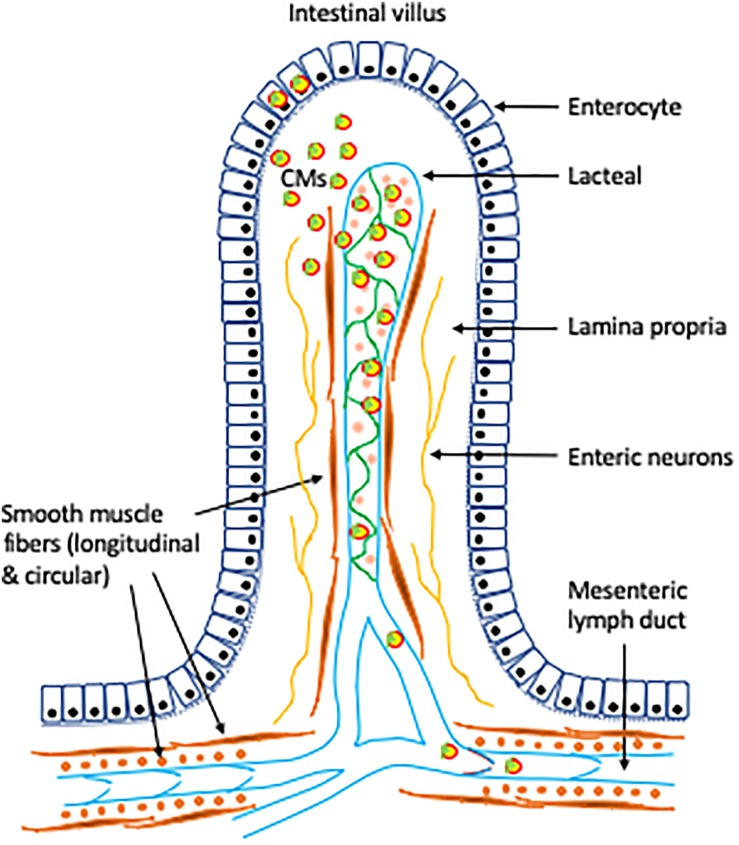FIGURE 1.
Role of lymphatics in intestinal lipid absorption and mobilization. Following intracellular synthesis and assembly in the intestinal enterocytes, CMs are secreted at the basolateral membrane via exocytosis. CMs move through the lamina propria and enter the lacteals through intercellular junctions. Controlled opening/closing of junctions on the lacteal wall may regulate CM uptake by the lacteals (Zhang et al., 2018). Contractile actions of smooth muscle fibers surrounding the lacteals and the collecting lymphatic vessels confer tonic and phasic pumping activities (Choe et al., 2015; Kassis et al., 2016). Lymphatic pumping and the one-way valves provide unidirectional drainage and transport of lipids through the lymphatic vasculature to the circulation. VEGF-C, expressed in a subset of smooth muscle fibers, plays an important role in intestinal lipid absorption and mobilization via regulation of prenatal lymphangiogenesis, maintenance of intestinal lymphatics in adults (Nurmi et al., 2015), and contraction of smooth muscle fibers surrounding the lymphatic vessels, including the lacteals (Gogineni et al., 2013; Choe et al., 2015). Neural control and σ1-receptor may also play a role in lymphatic functions (Trujillo et al., 2017; Bachmann et al., 2019).

